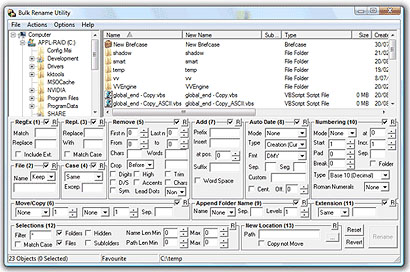Navigating Urban Logistics: The importance of adopting a Human-Centric Approach
Navigating Urban Logistics: The importance of adopting a Human-Centric Approach
By Mina Saghafian and Howard Weir (TØI)
In the ever-evolving landscape of logistics, the seamless flow of goods and services is not solely dependent on technical systems but is deeply intertwined with human interactions and social dynamics. In this insight, ULaaDS members Mina Saghafian and Howard Weir explore the intricate relationship between the technical and social elements within logistics systems, highlighting the importance of a holistic approach that prioritises user-friendly interfaces, ergonomic designs, and collaboration among stakeholders.
Logistics systems are complex organisms encompassing both social and technical elements. The way in which these different aspects interact can often lead to wide-ranging and unexpected outcomes. It is important to not focus solely on the technical elements, as undervaluing the significance of social dynamics and human interactions within these expansive systems can lead to problems that must then be solved once damage has already been done.
For instance, the acquisition of a new fleet of vehicles without a comprehensive understanding of driver roles and workflows can embed inefficiencies into the system for an extended period, spanning the entire lifetime of the vehicle fleet. Therefore, it is imperative to consider how new solutions can enhance task performance, ensuring effectiveness and satisfaction in the long term.
An essential aspect of a logistics system is supporting users through intuitive interfaces that are user-friendly and easy to navigate. In today’s digital landscape, where many interfaces and apps are integral to daily operations, supporting users in their tasks while minimising the potential for mistakes is necessary for optimal system performance.

However, designing new solutions is not limited to digital interfaces. The tools used to navigate these physical spaces, such as delivery vans or cargo bikes, should also be designed to support the tasks of drivers. This may involve improvements in ergonomics or loading compartments to streamline their workflow.
There will always be people involved who use technology to deliver the best service possible to suppliers and receivers. This further implies that the coordination and regulation of these activities requires considerations from an organisational perspective. Logistics actors, municipalities, and other regulatory bodies involved should have a common vision, exercise supervision, and foster collaboration to align and achieve their common goals. To ensure that the entire system functions optimally for both people and technologies, the systems approach must be taken. One effective strategy in ensuring that a system is well-coordinated is to consider the entire chain of events, thus enabling the smooth flow of products or services in their journey.
From terminal to customer – the parcel’s journey
Examining a single logistics operator can be a good starting point to collect data and gain insights into the social aspects of logistics systems. Let’s look at parcels entering the city through logistic operators like postal companies, focusing on the significant role of the human element in this journey. In this example, we will consider parcels departing from the main terminal by truck and are moving towards the city, where they will be transferred to smaller vehicles operating out of a micro hub.

At this point, the parcels have already undergone numerous interactions with people as they are sorted within the terminal. This stage of the process requires knowledge, communication, organization, and the right equipment. Once the truck transporting goods for the city leaves the terminal, we can look at the driver’s perspective. Drivers must sit comfortably, be mentally vigilant, ensure their own safety and that of others outside the vehicle, adhere to road signs, and adapt their driving behaviour to the flow of traffic, all in pursuit of arriving at their destination safely and efficiently. Additionally, they rely on digital devices and interfaces for navigation, communication with logistics centres, and tracking tasks. Identifying elements that hinder these tasks is crucial, such as dispatch systems reliant on text-based information, which may encourage drivers to check their phones. The need for multitasking and processing multiple pieces of information simultaneously can introduce potential errors. This exemplifies a system flaw, which can be addressed through user-friendly interfaces that offer essential information clearly, reducing the need for multitasking and minimising errors.
Once at the micro hub, drivers must park safely and assist in transferring goods from the vehicle. The infrastructure can determine how quickly, safely and easily this is managed. These goods will now be transferred to two lightweight electric freight vehicles, often cargo bikes. The goods must be placed into the right vehicle, with some goods potentially remaining at the hub for later refill. This requires careful packing of the bikes, often with the support of software. The loading process can impact the efficiency of the driver’s route. Questions arise regarding the organisation of packages and whether drivers have the necessary information to load their bikes swiftly and effectively.
En route, the cyclists need to take similar considerations to those of the truck driver in order to navigate a complex traffic environment safely and efficiently. Effective communication with dispatch is essential to adapt to changing circumstances, and interactions with customers are crucial to ensure successful package deliveries. Each stop offers opportunities for improvement, such as optimising vehicle parking, facilitating access to storage compartments, locating packages efficiently, and easily locating customers.
In summary, following the journey of a single parcel sheds light on the multitude of people involved, the frequency of interactions, and the need for user-friendly interfaces. This approach helps unravel system flaws and explore potential improvements. People are integral at every stage of this process, and each handling of a parcel, whether transferring it between vehicles or any other task, carries the potential for introducing errors. Simultaneously, individuals actively engaged in the parcel’s journey serve as valuable resources, capable of resolving unexpected challenges, thereby contributing to the seamless progression of the parcel’s journey.
The ULaaDS connection
ULaaDS conducted several pilot projects in different cities, offering two key advantages. Firstly, these projects helped unveil flaws in existing systems and facilitated the improvement of designed solutions. Secondly, they served as a means to introduce the public to new possibilities and alternative approaches. In essence, these pilot projects acted as catalysts for change, encouraging the adoption of more sustainable solutions for liveable cities.
The insights gained from ULaaDS through conducting these pilots highlighted the importance of taking a user-centric approach for sustainable solutions. Prioritising user satisfaction and long-term engagement emerged as key factors. Furthermore, it is vital to consider the entire journey chain, rather than individual components or terminals. This holistic perspective ensures that the needs of all users, user interfaces, tools, and infrastructure, are accounted for.
Supporting people through thoughtful design- considering new vehicles from a human perspective
ULaaDS tested innovative new vehicle types in several cities, including heavy cargo bikes in Bremen, 3-wheeled electric freight vehicles in Groningen, and an autonomous shuttle in Mechelen. These vehicles have the potential to either replace larger vehicles or reduce overall vehicle kilometres. Taking the example of the heavy cargo bikes in Bremen, the safety and comfort of drivers and cyclists was paramount. This was guided by ergonomic considerations and thoughtful design, through assessing their interaction with other vehicles, bikes, and pedestrians, as well as their manoeuvrability on city roads.

The size of the bikes, the number of wheels they have, the type of suspension used, and the frame materials, are just a few areas that must be considered. Equally central was the ease and speed of loading, unloading, and securing cargo loads, which impacted the driver’s workday. During the project, notable improvements were observed, such as Rytle’s enhanced loading system for swift pallet lifting, saving time and effort for couriers.
To make these vehicles applicable across different cities, factors like topography and the need for electric bike power to handle varying loads and slopes have to be assessed. For larger bikes, careful deliberation will determine whether they would primarily operate on regular roads shared with cars or on dedicated bicycle infrastructure. The size of these cargo bikes could potentially hinder the comfort of other cyclists, potentially necessitating adjustments like riding further into car lanes or pedestrian areas to pass them. These adaptations might introduce new safety challenges. Therefore, the design of these cargo vehicles must not only prioritise the comfort and safety of their riders but also ensure harmonious coexistence with other road users and pedestrians. Embracing a broader range of perspectives within the system can foster social acceptance and facilitate successful implementation.
Social acceptance: considering a wide range of stakeholders
ULaaDS expanded its objectives to consider social factors and acceptance beyond its immediate scope. In ULaaDS, the role of design factors in shaping interactions with the city and how they are perceived by city residents was taken into account, and acceptance factors were identified. The project demonstrated that acceptance is greatly facilitated through familiarity. For instance, the study investigated user attitudes towards parcel lockers on autonomous vehicles. Users quickly adapted to and embraced the concept of an autonomous vehicle after their first-hand experience. However, people preferred static parcel lockers over the onboard locker due to their familiarity, lack of waiting times, predictability, greater capacity, and the convenience of not needing multiple apps. In contrast, the dynamic locker had limited capacity, experienced availability issues, and demanded more from users through its interface. The trial aimed to address the challenge of transporting people and parcels simultaneously, but balancing freight capacity and passenger comfort remains crucial.
When it comes to using the space in pedestrian zones, businesses relying on goods deliveries can be negatively impacted when service or logistics vehicles obstruct their shop windows and entrances, or make the area less appealing to visitors. ULaaDS highlighted the significance of businesses in the neighbourhood affected by cargo vehicles’ parking, especially those with outdoor seating, which contributes a significant portion of their annual revenue. Balancing the needs of these businesses with those of goods delivery vehicles emerged as a crucial aspect of urban logistics planning.
UlaaDS has shed light on critical aspects of sustainable logistics solutions, emphasising the importance of considering people when designing solutions – both primary users and those that may be passively affected by these solutions. By considering people early on and designing solutions that address their needs, the likelihood of acceptance and the long-term use of these solutions is greatly enhanced.




